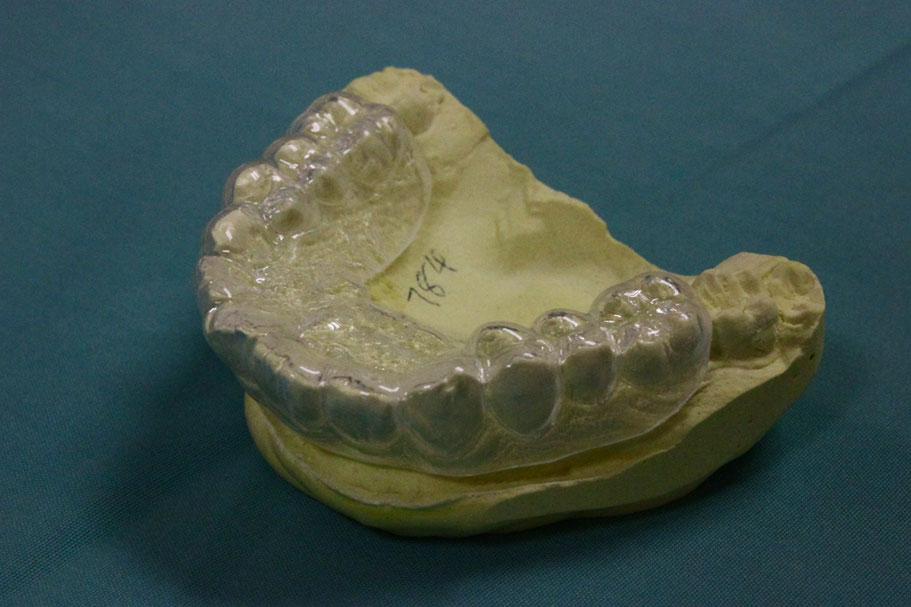Mouthguards are made of plastic meaterial and used by many to protect their teeth from injury or excessive wear.
Who would need to use a mouthguard?
- Anyone who participates in contact sports should wear mouthguards. Mouthguards should be used when there is a risk of injury either from colliding with another athlete, or when there is risk of accidental injury from sporting equipment. Adult and chlidren who participate in games such as football, boxing, hockey and cricket, to mention a few, would benefit from the use of mouthguards.
- Mouthguards could also be recommended by a dentist when one experiences night-time tooth grinding (bruxism). This would usually be custom-made for the individual to prevent excessive tooth wear.
There are three types of mouthguards available.
-
Prefabricated mouthguards
These can be obtained from pharmacies or sporting goods stores. It is very affordable and can be used right away by the wearer.
The drawback of the prefabricated mouthguard is that, as it may not fit the wearer well, it can be uncomfortable. A point of note is that when the mouthguard does not fit well, it does not protect the teeth.
-
Thermoplastic mouthguards
These can also be obtained from pharmacies or sporting goods store. It provides a slightly better fit when compared to the prefabricated mouthguard. This is because the material can be warmed up in moderately hot water and then shaped to fit the wearers’ jaw.
-
Custom made mouthguards
Custom made mouthguards are made specifically for the wearer. A dentist would first make a mould of the jaw. This would be sent to a dental labarotory where a mouthguard is constructed upon the mould. Hence, this type of mouthguard provides the best fit and protection
Why should I use a mouthguard?
There is always a risk of injury when partaking in contact sports. A mouthguard reduces the impact to the teeth, should the wearer sustain an injury to the face and jaws. As such, the severity of dental injuries and the risk of tooth loss are potentially reduced.
A mouthguard could also be prescribed by a dentist when a person has habitual tooth grinding (bruxisme). In this situation, the mouthguard is used to protect the teeth from excessive wear as a result of the tooth grinding habit. Preventing further tooth wear would also aid in preventing tooth sensitivity and pain.
How do I look after my mouthguard?
- The mouthguard should be rinsed with water each time, before and after use.
- It can be cleansed using mild soap or toothpaste and water. After which, it should be rinsed and dried before being stored in a container.
- Ideally, the mouthguard should be kept in a container with ventilation holes, in order to ensure that it can be stored dry.
- The mouthguard should be examined regularly to ensure that it is not worn out.
- Your dentist would need to examine the mouthguard regularly to ensure that it is still in good condition. Do bring along the mouthguard during your dental check up.
| Last Reviewed | : | 4 February 2014 |
| Writer | : | Dr. Yogeswari a/p Sivapragasam |
| Accreditor | : | Dr. Sharol Lail bin Sujak |








